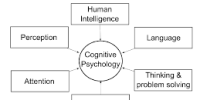For more links of this same post, Click the links below-
Bank With Southeast Bank Limited (Part-1)
Bank With Southeast Bank Limited (Part-2)
Bank With Southeast Bank Limited (Part-3)
4.1 Research and Development (R & D) and Training
The Bank has successfully completed 15th year of banking operation with a network of 56 Branches and 10 SMECenters recording significant growth in deposit, business and profitability. In order to consolidate the present position and maintain sustained growth objectives, the Bank gives utmost importance in making continuous investment in Research and Development (R&D) and Training to optimize its financial performance keeping socio- economic priorities in mind. In the backdrop, the Bank has decided to establish a separate Research and Development (R&D) division at head office to make continuous research and economic forecasts / analysis on the macro-economic variables so that operational efficiency is achieved at all levels and excellence in customer service and brand image are increased in the competitive banking scenario by appropriately addressing upon risk management principles.
4.2 Branch Expansion Program
The Bank is presently operating with 56 Branches including 5 Islamic Banking Branches, 14 Rural Branches. The Bank also opened 10 SMEServiceCenters at important business centers of the country and 1 Off-shore Banking Unit at Dhaka EPZ. The Bank has achieved highest per branch profit in 2009.
To cater to the increasing demand of the clientele, the Bank plans to open 10 more Branches and 10 SME Branches in 2010 in important hubs including non-urban growth centers to contribute to the national economy subject to obtaining license from Bangladesh Bank.
4.3 Budget and Budgetary Control
The Bank follows bottom up planning approach in the preparation of annual budget and initially invites draft proposals on different budgetary items including deposits, advances, profitability, and businesses from the Branches.
The draft budget estimates are then prepared by the Head Office Management and reviewed/finalized in the “Business Policy and Managers’ Conference”. After approval in the meeting of the Board of Directors, Bank’s budget is implemented. The Bank Management puts constant efforts throughout the year for achievement of the budget. It periodically reviews the variances and the progress towards achieving the budgetary goals.
4.4 Treasury Operations and Fund Management
Southeast Bank’s Treasury Operation is carried out to manage both local and foreign currency fund in the growing business need of the bank. Treasury operation is also responsible to measure and minimize the risk associated with Bank’s foreign exchange exposure, liquidity, interest rate, asset liability management and overall fund management of the bank. The department has effectively played its role in determining the direction of the markets, through different modern business techniques and sophisticated technological support. Besides, our treasury team has also managed all the regulatory requirements like maintenance of CRR, SLR etc in an efficient manner.
The Foreign Exchange desk handled significant amount of foreign currencies throughout the year with a reasonable spread through its widespread branch network. The FX desk handled a total of USD 2,030.00 million in 2009 which is 21.62% higher than the year 2008. In addition to that, our treasury department as a profit center generated an operating income of Tk. 417.39 million in Foreign Exchange operations, Tk.1,817.17 million in Money Market operations and Tk.416.99 million in Government Security trading operations in aggregate which is 62.22% higher than that of 2008. The Bank adopted a customer-oriented service policy and developed diverse products to meet the needs of corporate, commercial and retail customers for better fund management and optimum return.
4.5 Asset Liability Committee (ALCO)
As per Bangladesh Bank guideline, the Bank has a fully functional Asset Liability Committee (ALCO) for prudent balance sheet risk management. The committee consists of the Managing Director as the Chairman of the committee, Deputy Managing Director and strategically important Divisional Heads of Head Office. The meeting of the Asset Liability Committee is held every month. The committee reviews interest rate risk and liquidity risk of the bank and takes necessary steps to mitigate those.
4.6 Credit Monitoring
Maintaining the quality of assets is the foremost important aspect for efficient banking business. To secure the shareholders’ and depositors’ interest, the Bank has strengthened and intensified its monitoring and follow-up activities in order to maintain quality of assets and to reduce the NPL to a minimum level. The Recovery Unit of Branches and the Recovery Cell of Credit Administration Department at Head Office are primarily responsible for proper monitoring, follow up and recovery of non-performing/poor performing loans.
They keep close attention to the poor performing loans by preparing a ‘Watch List’ and remain vigilant to upgrade the status of those loans through continuous monitoring and follow up. A Problem Account Management Committee has been formed consisting of Head Office senior level executives headed by the Managing Director for continuous monitoring and follow up of problem loan accounts.
4.7 Risk Management of the Bank
Southeast Bank has an integrated risk management strategy that can create the transparency SEBL are looking for. This approach makes it easier to understand, control and optimize the Bank’s financial risks and opportunities. It can also help detect, prevent and mitigate different risks in Banking Industry. It enables the Bank for regulatory compliance, secured information sharing and enhanced risk awareness as well as to embed all the policies and procedures adopted by the management in business process for more effective governance and control of the Bank. Southeast Bank Ltd. has already established an effective program to combat Money Laundering and Terrorist Financing.
The elements of the said program are communicated to all levels of personnel of the Bank to ensure a thorough understanding of individual responsibilities, prompt identification of unusual activity and maintaining record retention requirements set forth by the aforesaid regulations. The Bank has also implemented the aforesaid AML and ATF Program which includes all the AML and ATF Principles in all the jurisdictions in which the Bank operates. The entire Clients’ Accounts are monitored by the Bank on an ongoing basis to detect unusual/suspicious transactions on the basis of Transaction Profile provided by the client.
5.1 SME Banking
The Bank, in line with the policy guidelines of Bangladesh Bank, has strengthened its SME operation, through introduction of 10 (ten) SME Service Centers all over the country during the year 2009. Policy for financing in the SME Sector has also been devised and implemented. The credit proposals from the branches helped the Bank to experience a growth of 25.76% in this sector. At the end of 31st December, 2009, the Bank extended credit facilities to SME customers amounting to Tk.8,884.30 million compared to Tk.6,595.20 million at the end of 31st December 2008.
Bank provides credit facilities to the small and medium entrepreneurs to be more productive and stable. The entrepreneur should be skilled in managing his / her business and has experience of successfully managing the business for at least 2 (two) years. The literate entrepreneur is given preference. The age of the entrepreneur must be within the range of 20 to 50. The entrepreneur must be socially acceptable.
A clear succession plan for the entrepreneur must be present. If the entrepreneur is an individual, he / she must be a national or permanent resident of Bangladesh. If the entrepreneur is a company / firm or other business entity, it must be registered in Bangladesh with majority shares owned by Bangladeshi and valid licenses for the business. The entrepreneur’s principal place of business must be in Bangladesh. If the entrepreneur is a member of any social organization / association, he / she should arrange a corporate guarantee of the association / organization through formal regulation (if any). The business must be legally valid, i.e., have trade license, income tax or VAT registration certificate (wherever applicable).
The business must have a defined market with clear growth potentials. Proper utilization and timely repayment of previous loan(s) will be considered as proven track record of the applicant for renewal & enhancement of credit facility.
- For small enterprise: Taka 2.00 lac to Taka 30.00 lac
- For medium enterprise: Taka 2.00 lac to Taka 50.00 lac
5.2 Offshore Banking Service
Southeast Bank started its Offshore Banking operations in Dhaka EPZ from 30th December, 2009. In order to cater to the finance and banking needs of 100% foreign owned industries in Dhaka Export Processing Zone (EPZ), the non-resident
Bangladeshis working abroad and the non-resident foreign institutions, Our OBU aims to provide banking products such as Savings / Current / Term Deposits / Loans and Advances (Working Capital Finance) and Export Bills discounting facility subject to approval from Bangladesh Bank.
5.3 Islamic Banking
The Bank started its Islamic Banking Operations on July 28, 2003. The Bank opened 03 (three) Islamic Banking Branches in the year 2003 and 02 (two) Islamic Banking Branches in the year 2004.
At present, the Bank has 05 (five) Islamic Banking Branches out of total 56 branches, 10 SME Service Centers and 1 offshore Banking Unit. To further streamline Islamic banking operations of the Bank within the purview of Bangladesh Bank BRPD Circular No. 15 dated November 09, 2009, the Islamic Banking Wing of the Bank has already been converted into a full-fledged Islamic Banking Division from December 27, 2009.
There is a Shariah Supervisory Board in the Bank which oversees and guides Islamic Banking operations of the bank based on Shariah requirements. Leading Islamic scholars of the country well versed in Shariah concerning Islamic Banking operations are on the Bank’s Shariah Supervisory Board.
The Bank provides all kinds of Islamic Banking services to the customers within the provisions of the Bank Company Act 1991, Bangladesh Bank’s Directives and the principles of Islamic Shariah.
The bank is maintaining a separate set of accounts for Islamic Banking Branches. Fund deposited by the depositors with the Bank under Al-Wadeeah and Mudaraba principles and profit accrued from different modes of investment and financing i.e.Mudaraba, Hire Purchase (under Shirkatul Melk), Murabaha, Bai-Muajjal, and Bai-Salam are distributed amongst the depositors and the bank ensuring a reasonably fair rate of return on deposits based on weightage of individual product and complying Shariah norms.
As on December 31, 2009, the deposit and investment of Islamic Banking Branches were Tk.10,307.54 million and Tk.4,842.20 million showing growth of 57% and 66% respectively. During the period 2009, total import and export business handled were for Tk.1,890.81 million and Tk.1,723.11 million respectively recording significant growth. Non Performing Investment of Islamic branches were only 0.64% of their total investment in 2009.
5.4 Merchant Banking
After getting approval from Securities and Exchange Commission on 6th April 2009, Merchant Banking operation of Southeast Bank Limited started from 11th August 2009 with the object to provide quality services to the prospective institutional and individual investors in the capital market.
In today’s diverse and unpredictable economy and global financial crisis, the need of a sustained profit plan and long term growth strategy have become essential for both individuals and corporate bodies. Merchant Banking operation principally involves providing financial services and advice to the prospective investors.
6.1 ATM Services
Southeast Bank Limited is a member of the E-cash Shared ATM Network. E-Cash has a network of 32 ATM’s located in strategically important locations on five important cities / towns of the country namely: Dhaka, Chittagong, Sylhet, Cox’s Bazar and Rajshahi. SEBL are providing ATM service coverage to our 30 branches.
- SEBL issue ATM card against SB, CD & STD Account
- TK 500 for annual / renewal fee.
6.2 Dual Currency VISA Credit Card
Single Card-Dual Use (Local & International):
SEBL Visa (Dual) Credit Card has unique feature of allowing limits both for local and international usage in a single card. However, one may opt for separate cards if he / she find the same convenient for him / her. SEBL Visa (Dual) Credit Card is accepted at any merchant locations or payment counters displaying Visa logo in any part of the world.
- Widely Accepted at Merchants & ATMs Worldwide
- Competitive Annual / Renewal Fee
- 20 – 50 Days Interest Free Credit Facility
- 50% Cash Drawing Facility at ATMs and any Southeast Bank Branch
- 100% Cash Drawing Facility at purchase mode through Card Cheque
- Easy Repayment: Cardholder has also the option of paying a minimum of 5% of his / her bill amount every month and thus can enjoy the flexibility to plan repayment in installment basis.
- Auto Payment facility: If a cardholder maintains an account with any of the SEBL branches, he / she can instruct us to realize the monthly bill against his / her credit card from his / her SB/CD/STD account automatically.
- Payment of International Roaming Bill of Mobile Phone: Cardholder can pay his / her international roaming bill of cell phone through Credit Card.
- Auto Debit Facility of Mobile Phone Post Paid Subscribers
- Free Supplementary Cards: Supplementary cards are issued against a Principal Card. While each supplementary cardholder will have his / her own independent usage within the principal card – holder’s credit limit, the expenses will be charged to the principal card – holder’s account. Separate limit but not exceeding the principal may be fixed for each supplementary card.
- SMS Push – Pull Service
6.3 Locker Services
Southeast Bank has locker facilities. A client must have a CD or STD or SB or any type of account in the respective branch where they wants to avail the locker service.
Fees and Charges of Locker Service
6.4 Loans and Advances
Bangladesh’s economy has been more or less resilient amidst the global crisis, but lower exports and remittances growth and stagnant investment rates in the country impoverished the growth. In spite of these, the overall banking environment remained more or less smooth during 2009, other than the occasional excess liquidity situation in the last quarter of 2009. The loans and advances portfolio stood at Tk.77,497.57 million as on 31st December, 2009 in comparison to Tk.60,281.26 million as on 31st December, 2008 registering a growth of 28.56%.
The Bank continued its expansion of loans and advances portfolio throughout the year 2009 by prudent selection of borrowers.
The Bank took advantage of the opportunities and challenges in the socio-economic and business scenario of the country and expanded credit in all segments including priority sectors of Government of Bangladesh like SME and Agriculture. The bank expanded its SME business operation in 2009 with top most priority.
In addition to substantial SME business through the existing branches, the Bank also established 10 (ten) SME Service Centers to tap new business in this sector.
The loan portfolio of the Bank is spread over the business of different sectors like ready made garments, textile, spinning, dyeing, ceramics, pharmaceuticals, telecommunication, petroleum, steel and engineering, ship scrapping, cement, edible oil, sugar industry, real estate, transport, agriculture and other commercial lending etc. which ensures diversification without concentration to limited sectors.
The Bank also thrives on reducing risk at the time of borrower selection through due diligence on government policy, industry outlook, borrower’s business performance along with mitigation of unforeseeable risk by taking adequate collateral. The Bank however, through increasing monitoring and supervision of the loan portfolio could manage to keep the level of Non Performing Loans (NPLs) as on 31st December, 2009 at 3.73% compared to 4.12% as on 31st December, 2008.
6.5 Guarantee Service
The Bank issued guarantees amounting to Tk.11,916.74 million during the year 2009 compared to Tk.15,078.99 million recorded in the previous year. The guarantees were issued in favor of different Govt. Authorities, Ministries, Autonomous Bodies, Corporations, Private Companies, Individuals and Multinational Companies, etc. on behalf of the valued clients of the Bank.
6.6 Club Finance
Syndicated loans are loans made by two or more lenders and administered by a common agent using similar terms, conditions and common documentations. Most loan syndications take the form of a direct-lender relationship, in which the lead lender is the agent for the other lenders in the origination and administration of the loan and the other lending banks are signatories to the loan agreement.
Southeast Bank is one of the pioneers in the banking arena of the country for Syndicated / Club Financing of corporate houses for new project establishment, BMRE of existing operations and working capital facilities. The Bank participated in 11 Syndications during 2009 and allowed Tk.1,827.00 million in different segments of the economy like ceramics, pharmaceuticals, poultry, textile, spinning etc.
6.7 Corporate Financing
Southeast Bank provides credit facilities to help corporate clients move forward to improve cash flow and working capital restructure debt, consolidation, acquisition and buyout etc. The credit facilities to the corporate clients are typically of 02 types (i) asset based lending and (ii) cash flow based lending. Asset based lending also called secured lending, is covered by a wide variety of assets by using the liquid, current assets of the company (such as accounts receivable and/or inventory) or the fixed assets of a business (such as plant, property, and equipment) as collateral. Cash flow financing are allowed to corporate clients having predictable and historically sustainable cash flows (operating performance and enterprise value based on brand, franchise value, technology, or customer base) to meet client’s seasonal requirements, business expansion, cyclical business swings, improve business cash conversion cycle etc.
The Bank facilitates its corporate clients with credit facilities only after considering client’s business / industry environment, current and projected financials, management personnel etc. and after taking enough risk mitigating measures to protect the interest of the Bank.
The financial packages are recommended and provided to the corporate clients in conformity with the Bank’s credit policy and annual sectoral allocation either from own finance of the Bank or raised through Syndication / Club Finance.
6.8 Agriculture Credit
The Bank has committed itself to the Government’s initiative to channelize formal credit facilities to the agricultural sector. During the financial year 2009-2010, the Bank has taken a target of Tk.350.00 million for this purpose, and as on 31st December, 2009, Tk.53.00 million has already been disbursed. Due to Bank’s limitation in operational exposure in this sector coupled with the distinct industry specific nature of the sector, most of the funds has been channelized through NGOs already specialized and experienced in providing micro credit finance. During 2009, a scheme has also been devised for structured financing in the sector through the Bank’s regular marketing units / branches. The loan outstanding disbursed in the agriculture sector stood at Tk. 273.50 million.
6.9 Lather Section Investment
The Bank has ventured into a new avenue of financing through entering into an agreement with the Leather Sector Business Promotion Counsel (LSBPC) of Government of Bangladesh for financing the primary producers of Leather Goods in the Leather Sector. Initially Tk.20.00 million has been allocated on a revolving basis for the purpose of such financing which is expected to be raised in future based on repayment behavior of the extended credit facilities from this sector.
6.10 Consumer Credit Scheme (CCS)
The Bank extends credit facilities to individuals for purchase of domestic durables like Refrigerator, Television, Washing Machine, Furniture, Computer, Motor Car etc. through its Consumer Credit Scheme (CCS) to improve quality of life / standard of living, particularly of the fixed income group of the society. A separate cell at Head Office appraises monitors and supervises all the CCS proposals and ensures quick disposals of the same.
Total investment in CCS Loan as on December 31, 2009 stood at Tk.205.21 million compared to Tk.205.87 million as on December 31, 2008.
6.11 Products and Services
Offering customers with diversified products and services is one of the major goals of the Bank. In implementation of this, the Bank launched a new deposit product named Millionaire Deposits Scheme (MDS) in 2009 to extend its deposit product base.
All application forms of various products and services were modified as per the guideline of Bangladesh Bank for customer’s convenience. The Bank also opened ten new branches and ten SME centers in 2009. The Bank also introduced SEBL Travel Card, Merchant Banking etc. to diversify product base and validated special scheme products with the changes of time catering to clients needs.
6.12 Customer Service
In the backdrop of changing and globalize banking scenario, the Bank has evolved a conducive organizational structure to promote appropriate marketing approaches to face the new challenges and stay in the competition.
The restructuring of Marketing Division organogram focuses on customer centric approaches to increase brand loyalty of SEBL as a business friendly Bank. The Bank envisages conducting of marketing promotional activities and establishes Brand marketing through Customer Service, CSR, Event Management, Product Diversification, Positioning and Repositioning etc. This promotes establishing long term profitable relationship with the clients, providing total solutions to customer problems and ultimately adds value to the Bank by way of creating a win-win situation both for the client and the Bank.
















